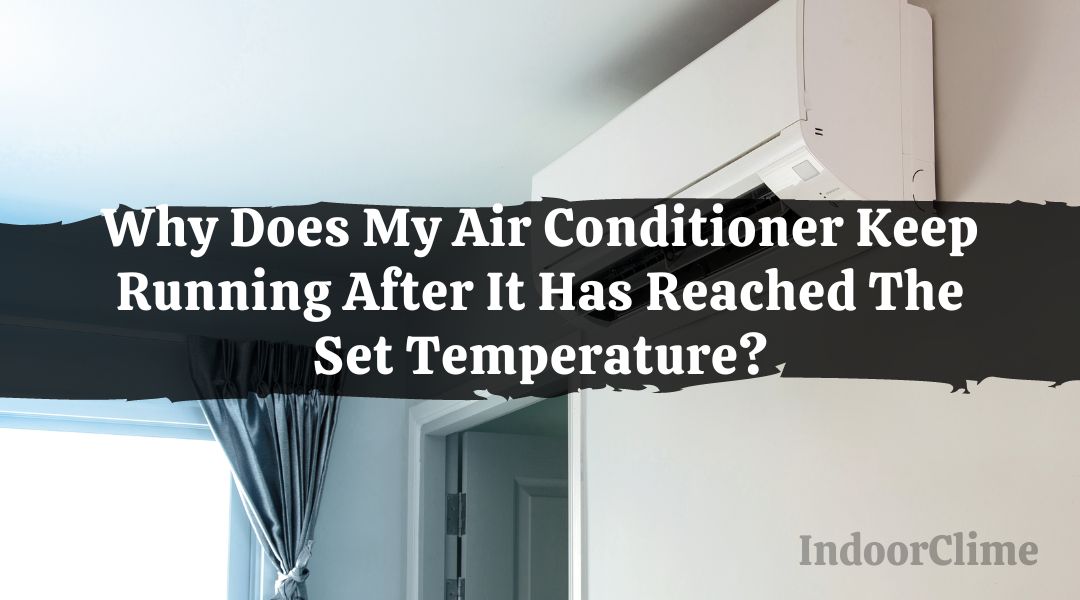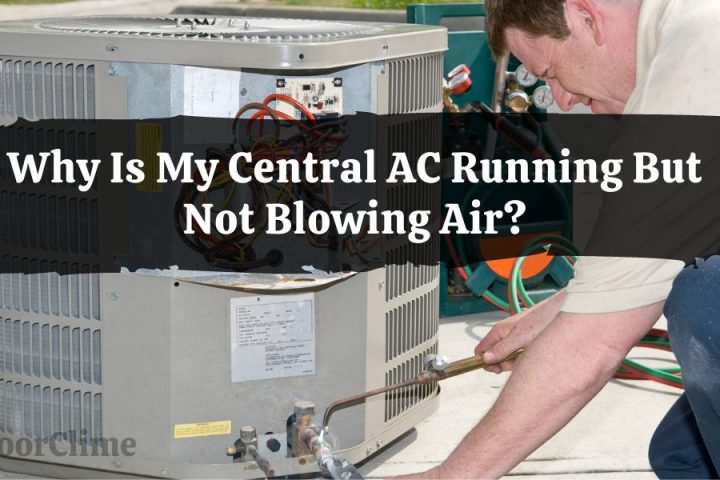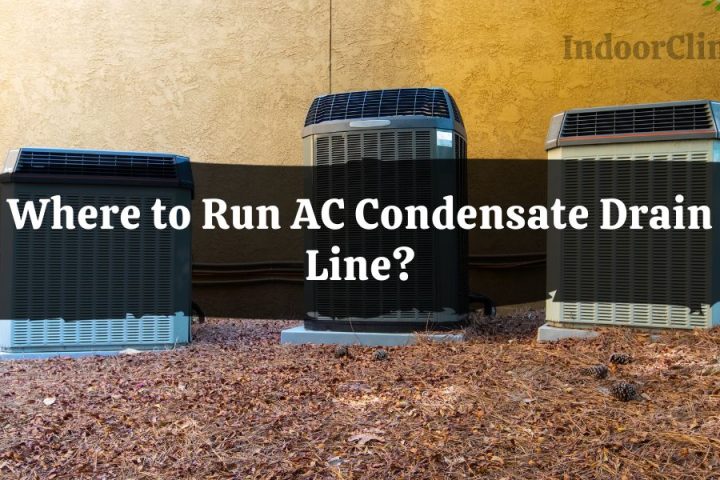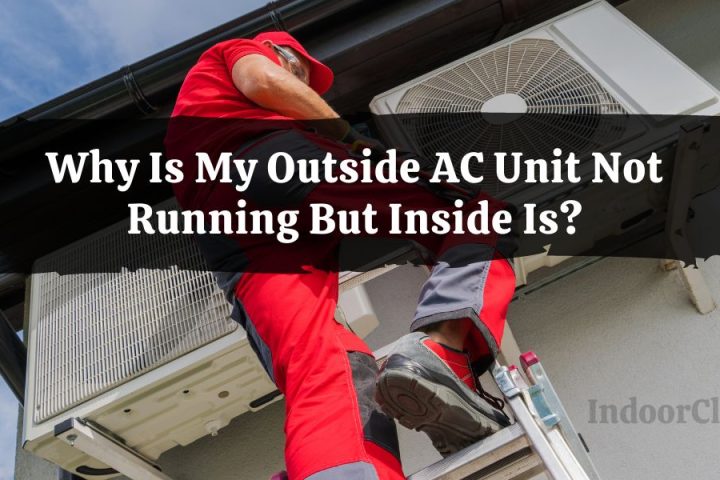As someone who has an air conditioner at home, you’re probably aware of how big its energy consumption is.
So even if you need the entire house to remain cool the whole day, having the AC running the whole time isn’t a practical option.
Most air conditioners’ settings can be adjusted, so they switch OFF automatically once a certain temperature has been reached. This can be your AC’s way of helping you save electricity and lowering your utility bills.
However, sometimes your AC may not work exactly as needed.
Your air conditioner may keep running even after the set temperature has been reached. If this happens, don’t panic. Although it would explain your increasing electricity bill lately, some reasons it’s happening don’t require much fixing.
What’s important is you immediately take action and not allow the problem to persist, as it may lead to other major issues later.
Continue reading to learn about the reasons for this issue on your AC and what you can do to address it.
Reasons Why an Air Conditioner Keeps Running After Reaching The Set Temperature
While you shouldn’t be immediately concerned when this happens, you may ignore a serious problem if you don’t do anything.
Knowing why your AC keeps running after reaching the set temperature is essential as it helps you determine how to fix it.
Reason 1: Clogged Or Dirty Air Filter
No matter your air conditioner’s issue, one of the first things you need to check. A clogged air filter leads to airflow problems which prevent your AC from functioning correctly.
Luckily, cleaning your air filters should remove whatever caused them to clog.
This should be done regularly to prevent dirt or debris from building up and ensure everyone in the house isn’t breathing dirty air. Watch this video to learn how.
Reason 2: Restrictive Air Filter
If you replaced your AC’s air filter recently, it’s possible that you got one that’s too restrictive. Your new air filter may be restricting the airflow too much, making your AC work harder than normal.
To fix the issue, purchase an air filter with a low Minimum Efficiency Reporting Values (MERV) rating.
Reason 3: Dirty Evaporator And Condenser Coils

When your air conditioner’s coils are already covered in dirt, it significantly affects your AC’s ability to cool the entire area. In addition, the presence of built-up dust and debris can make your AC run slower – thus taking longer to reach your desired temperature.
The obvious solution would be to clean your air conditioner’s coils. It may be hard at first, but it should eventually become easier the more you do it.
Reason 4: Frozen Evaporator Coil
A sign that the evaporator coil has frozen is when your air conditioner produces warm air. A frozen evaporator coil is usually a result of other issues, such as leaks and low refrigerant levels. Determining the reason for freezing should be done by a professional.
Nonetheless, it’s still possible to unfreeze the evaporator coil yourself by doing the following:
- Switch OFF and don’t use the AC for 24 hours to let the frozen evaporator coil thaw
- If it looks dirty, clean the evaporator coil.
- Replace the air filters if they are covered in dirt.
That said, getting help from a technician would be best as you could be dealing with a damaged evaporator coil.
Reason 5: Leaking Ducts
Air conditioner ducts are responsible for proper air transportation and circulation. When there is leaking in the ducts, your AC must run constantly to compensate for any cool air escaping through the leaks.
Sealing the leaks won’t be easy, given that some buildings have older ducting systems. This means you need to call an expert for help. Fixing them yourself may be much cheaper, but your inexperience may cost you more on repairs later.
Reason 6: Defective thermostat
Air conditioners have a thermostat that controls the temperature of the air being emitted. Unfortunately, a faulty thermostat won’t be able to sense the current temperature in the room.
This causes the AC to keep running even after reaching the set temperature.
Before you even consider replacing it, you need to confirm if the thermostat is the actual source of the problem. Either way, you will need the assistance of a technician.
Reason 7: Decreased Refrigerant Level

The chemical substance that allows your air conditioner to produce cold air is the refrigerant.
A low refrigerant charge may result from other underlying issues in the air conditioning system – particularly with the coils. Leaks or dirt in the coils could make your AC struggle to sustain a cool temperature.
You can try cleaning the coils or sealing the leaks for a quick fix. But getting help from a professional could help determine other issues you may be unaware of.
Reason 8: Blower Motor And Fan Problems
Additional factors contributing to an inefficient air conditioning system are the blower motor’s inability to produce adequate air and the fans beginning to slow down.
This problem can be solved by adjusting the fan speed to your preference. If it’s still at a slow speed, cleaning the fan blades might help since a layer of dirt may be slowing it down.
However, only an HVAC technician can determine if the motor and fan need to be replaced, so it’s best to call them.
Reason 9: Incorrectly-Sized AC Unit
Your air conditioning system’s ability to maintain a cold temperature can be altered if your space recently renovates. This is probably because your AC’s power output or size isn’t enough to support your new layout fully.
Have an expert perform a load calculation to ensure that your AC unit is correctly sized for your space. This process considers everything, including the size, design, circumstances, and other possible needs.
Reason 10: Maintenance Needed
Similar to your car and other home appliances, air conditioners need routine maintenance to ensure optimum performance during their entire lifetime.
AC units should ideally undergo maintenance at least twice a year, during spring and early fall.
Your nearby HVAC expert will be responsible for doing maintenance work. This person will check for defective or worn-out parts and recommend which ones need fixing or replacing.
A well-maintained AC unit typically lasts longer and is safer for the whole family.
What Can You Do When Your Outside AC Unit Runs Constantly?

The most common reasons for a constantly running outside air conditioner unit are the following:
- Poor or restricted airflow
- Dirty condenser coils
- Low refrigerant level
Here are a few things you can do to address this problem:
- Clean your air filters as often as possible and replace them four times a year.
- Ensure proper ventilation by opening the supply vents and checking if any grille vents are blocked.
- Assess for leaks and frozen evaporator coils from time to time to prevent refrigerant from leaking.
- Remove any dirt or debris stuck on the condenser coils for better heat absorption.
Additionally, you can use the above reasons as your guide to check for other possible issues your outside AC unit might have.
Also, there’s no shame in seeking help from HVAC experts, as they might find problems with your unit that you never knew existed!
How Long Should AC Run After Reaching Temperature?
Typically, air conditioners should only run for about 15 to 20 minutes after reaching the set temperature. However, the duration may vary depending on the following factors:
- Your AC’s overall condition
- The size of your AC
- The size and layout of your space
- The temperature outside
Contact a reputable HVAC expert, and they will determine how long your AC cycle should be.
How Do I Know If My AC Thermostat Is Terrible?
Below are telltale signs that your air conditioner’s thermostat is malfunctioning:
- The thermostat isn’t turning ON
- The thermostat setting is inconsistent with the actual temperature
- Your air conditioner runs continuously or short cycles frequently
Before concluding that your AC has a defective thermostat, do the following:
- Open the thermostat and sweep off any dust using a tiny paintbrush.
- Check for structural problems inside the thermostat, like loose screws or wirings.
- Remove and replace the thermostat’s batteries, as they might be worn out.
- Try to see if the thermostat is in the correct location.
If none of the steps above work, have a technician check your AC to confirm if it needs changing.
How Do I Stop My AC From Short Cycling?
A short cycle happens when your air conditioner shuts OFF before reaching the set temperature. Short cycles are often a result of a defective thermostat.
To prevent short cycles, you need to determine if your thermostat is still working correctly by following the abovementioned steps.
Short cycling can also happen due to reasons other than a bad thermostat. The noise your AC makes should tell you more.





